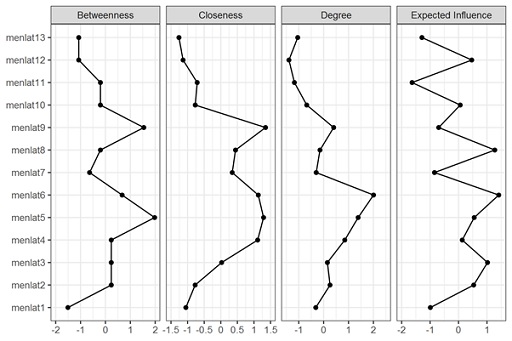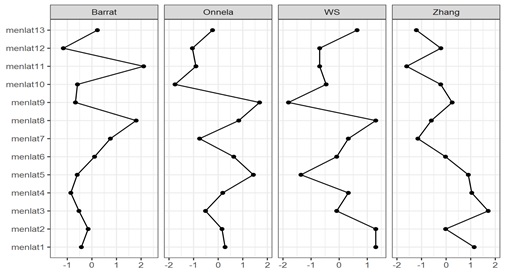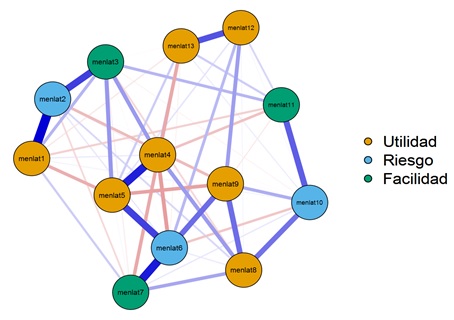
Expectation Networks in the Literature on Artificial Intelligence from 2020 to 2023
*Corresponding Author(s):
Cruz Garcia LiriosAutonomous Mexico State University, Mexico
Email:majd61_2009@yahoo.com
Abstract
Artificial Intelligence was the teaching and learning alternative in the context of the health crisis. The technology, devices and socio-digital networks that allowed the management, production and transfer of knowledge impacted the transition from the traditional to the virtual classroom. If the anti-pandemic policies of confinement and distancing led to the adoption of the virtual classroom, the platforms, repositories and digital libraries of higher education institutions were activated to support the transition. The objective of this work was to contrast and demonstrate the differences between the theoretical structure of artificial intelligence with respect to the observations made in this work. A documentary, cross-sectional and exploratory study was carried out with a sample of findings indexed to international repositories, considering the search by keywords in the period from 2020 to 2023. The results show the prevalence of three expectations: usefulness, ease and risk. In relation to the state of the art where stigma prevails as the central axis of mistrust between the authorities and users of the virtual classroom, the scope and limits of the study were discussed, as well as the corresponding recommendations were established. It is concluded that the evaluated literature reflects a scenario of contingencies and uncertainty as the health crisis intensifies or subsequent immunizations are performed.
Keywords
Artificial Intelligence; Centrality; Clustering; COVID-19; Neural Networks
Introduction
Technological perceptual studies have shown an indirect and direct, positive and negative effect of perceptions about the use of technologies [1]. Through attitudes and intentions, the perceptions of ease of use, usefulness and control have emerged as determinants of technology decisions and management. The perception of ease of use and the perception of usefulness have been raised as determinants of the acceptance of technology. The ease of use of technology is the degree of information around the investment of effort to handle a technology. Regarding the perception of utility, he defines it as the degree of information about the benefits expected from the use of a technology.
The effect is indirect of the perception of the use of technology [2]. Both the perception of ease of use and the perception of usefulness indirectly affect the acceptance of technologies. In this causal trajectory, attitudes toward technology are mediators of the perceptual effect. The effect of perceptions on the use of technology is direct. Technology perceived as easy to use indirectly and directly affects its use. Through the perception of usefulness, the perceived ease of use has an indirect incidence that impacts the use of technology with much greater significance in relation to its direct effect. That is, individuals who perceive an ability to use technology increase their expectations with the benefits that technology can provide them. A sample of volunteers from the entertainment and telecommunications industry and bank and tax administration operators allowed the prediction of the intention to use technology based on the perceptions of ease of use, usefulness, control and self-efficiency. When the perception of control interacts with age, it causes a positive effect on the intention to use. Regarding the prediction of the use of technology, the perception of control is the variable that causes the greatest effect.
The TAM extended the limits of perception by raising the perception of performance as the main target of technology relevance [3]. That is, if a technology becomes relevant in a given context, it activates perceptual processes that predict its use. Through this trajectory, ease of use, utility, and attitude are intermediaries of the contextual effect on technology use. The prediction of attitudes towards technology and consumer decisions in three groups classified as non-adopters, adopters and neutrals. In all three groups they established the prediction of the perception of benefits on the provisions favorable to the technology and their adoption decisions. They even established the causal relationship between the perception of ease of use on the perceived usefulness.
The prediction of electronic purchase is based on perceptions of security and perceived enjoyment [4]. In this model, the perception of ease of use turned out to be a better mediator compared to the perception of usefulness. In another model, perceived utility as a mediator increases the effect of the other three perceptions. In a third model, perceived ease of use is a better predictor compared to the other three directly related perceptions. Age and education indirectly determine the use of technology through the perception of ease and attitude towards technology. As age and educational level increase, expectations and dispositions increase the use of technology.
Despite the predictive power of perceptions, there is a direct relationship between the perception of utility and the continuous use of information systems [5]. This relationship was moderated by satisfaction after technology use and intention to use technology again. The influence is direct of the perception of utility on the attitude and purchase intention. Only the perception of ease of use of technology had an indirect effect on purchase decisions through attitudes. The effects are indirect with respect to the perception of the intention to use. It found that the direct effects are more significant than the indirect ones of the perceptions of utility and ease on the intention to use the technology. The prediction is direct of the decisions of acquisition and use of technologies from the perceptions of utility. In other words, the benefits perceived from the purchase of technologies have a direct, positive and significant impact on their use. To the extent that customers and users perceive more benefits than risks, they consume technology. In technological perceptual studies, utility and ease of use are the determinants of intentions and use of technologies. The evolution of the Internet influenced the development of technological perceptual studies. The perception of usefulness and ease of use are now factoring that explain the use of the Internet.
A meta-analysis demonstrated the causal relationship between the perception of usefulness and the perception of ease of use of the technology as the determinants of the acceptance of the technology [6]. Mainly, the perceived usefulness is considered the quintessential producer of the acceptance and use of technology. However, the perception of utility is only a transmitter, intermediary or mediator of the effect of external or exogenous variables on human behavior.
External variables such as gender, educational level and family income when interacting promote a moderating effect on the acceptance and use of technology [7]. Said causal relationship, being indirect, would be mediated by the perception of utility. However, only three studies have carried out the specification and demonstration of a model in which sociodemographic variables interact to predict technology use through perceptual variables such as utility and ease of use. The incidence of the sociodemographic variables of sex and age on the use of the Internet. As the age of the users increases, their perception of usefulness and their acceptance of technology increase.
However, psychological studies of human interaction with technology and cognition with the Internet have ignored the predictive power of family income, personal income, economic status, quality of life, subjective well-being, and educational level [8].
Methods
A documentary, exploratory and cross-sectional study was carried out with a sample of 50 sources indexed to international repositories such as Scopus, Scielo and Redalyc, considering the publication threshold from 2020 to 2023, as well as the search by key acronyms "COVID" and "TAM".
The findings were systematically recorded based on questions related to the relationship between Artificial Intelligence (AI), the Technology Acceptance Model (TAM) and COVID. Each positive relationship reached a value of 5, but a disengagement could be evaluated with 0.
The Delphi technique was used to evaluate the selected findings. The expert judges were selected considering the value of their h-index of impact in terms of referencing and citations established by google scholar. Thus, 20 judges participated in the initial evaluation. Subsequently, the scores were compared with the general average in order to be able to reconsider the preliminary score, or to ratify the numerical assignment.
The data was captured in Excel, processed in JASP version 14 and is available at www.cedinter.com . The coefficients of centrality, grouping and structuring were estimated in order to test the null hypothesis regarding the significant differences between the network exhibited in the literature and processed in www.conected.pappers.com, artificial intelligence that establishes the state of the art, regarding to the network observed in the present work.
The values of the coefficients close to unity were assumed as evidence of non-rejection of the null hypothesis, but the values of the parameters close to zero were considered as evidence of rejection of the null hypothesis.
Results
Centrality refers to the relationships between central nodes with respect to peripheral nodes. A value close to unity indicates the prevalence of the central node with respect to the peripheral nodes. A value close to zero indicates the absence of a relationship between the central and peripheral nodes. In other words, the perception of usefulness of the Internet is associated with the perception of risk, but also with the perception of ease of use. In all three cases, the perceptions reflect a structure of expectations regarding the use of the Internet that determine its intensive and systematic use. The impact of this process on learning is sequential because the perceived usefulness will impact electronic commerce in the market segment being analyzed (Figure 1).
 Figure 1: Centrality of Internet user perception of utility in the literature from 2020 to 2023.
Figure 1: Centrality of Internet user perception of utility in the literature from 2020 to 2023.
Source: Prepared with study data
The grouping values indicate the degree of proximity or remoteness of a node with respect to a group of nodes. The hypothesis to be tested suggests that a central node is configured around a set of central nodes by proximity. In the case of perceived utility, the Internet may be associated with other information search, selection, processing or dissemination devices (Figure 2).
 Figure 2: Grouping of the perception of Internet user utility in the literature from 2020 to 2023.
Figure 2: Grouping of the perception of Internet user utility in the literature from 2020 to 2023.
Source: Prepared with study data
The rating structure assigned by the expert judges indicates a learning neural network that begins with a utility perception node and ends with a risk perception node. In other words, the Internet is a teaching and learning tool that can be reliable and useful, but as the user is exposed to risks and their perception of the Internet as a tool for searching, selecting, processing and disseminating information changes (Figure 3).
 Figure 3: Internet user perception networks in the literature from 2020 to 2023.
Figure 3: Internet user perception networks in the literature from 2020 to 2023.
Source: Prepared with study data
Discussion
The contribution of this work to the state of the art consists of a contrasting of the theoretical model with respect to a structure observed in a sample of sources indexed to international repositories during the period from 2020 to 2023. The results show three perceptual dimensions that the literature identifies as utility, ease, and risk associated with Artificial Intelligence in the period from 2020 to 2023. Within the framework of the pandemic and the increased use of technologies, devices, and sociodigital networks, the structure found suggests that the literature activated learning that It was of the expected utility until it culminated with the perceived risk. In relation to public policies, risk communication was structured from the promotion of Artificial Intelligence as the guiding axis of the virtual classroom and self-directed learning to the perception of risks due to the incommensurability, unpredictability and uncontrollability of AI [9]. In this sense, the structure reported in the literature suggests that perception is a service quality factor in the event of a contingency [10]. Or, a social stigma when distrust permeates the relationship between the parties [11]. Therefore, it is suggested to extend the model towards the variables that explain the quality of the service and the social stigma of technology with respect to the health crisis.
Conclusion
The objective of the study was to contrast and demonstrate the differences between the theoretical structure related to expectations around artificial intelligence in the pandemic scenario with respect to the qualifications of expert judges on the subject. The results show coefficients that indicate the non-rejection of the null hypothesis alluding to the differences between the theory and the expert evaluation. In relation to the theoretical model where the perceptions of utility, ease and risk stand out as the transversal axes of the academic discussion on AI, the present work corroborates the structure, although it indicates an input layer fostered by utility and an output layer linked to risk. That is, the AI is a tool that is perceived as friendly, although dangerous because the surrounding information suggests a lack of control of the AI advances.
References
- Wong CK, Ho DTY, Tam AR, Zhou M, Lau YM, et al. (2020) Artificial intelligence mobile health platform for early detection of COVID-19 in quarantine subjects using a wearable biosensor: Protocol for a randomized controlled trial. BMJ open 10: e038555.
- Tam FY, Lung JW (2023) Impact of COVID-19 and innovative ideas for a sustainable fashion supply chain in the future. Foresight 25: 225-248.
- Nguyen TT, Nguyen QVH, Nguyen DT, Yang S, Eklund PW, et al. (2020) Artificial intelligence in the battle against coronavirus (COVID-19): A survey and future research directions. arXiv preprint arXiv 2008: 07343.
- Xiong XL, Wong KKY, Chi SQ, Zhou AF, Tang JQ, et al. (2021) Comparative study of the clinical characteristics and epidemiological trend of 244 COVID-19 infected children with or without GI symptoms. Gut 70: 436-438.
- Rosli MS, Saleh NS, Ali A, Abu Bakar S, Mohd Tahir L (2022) A Systematic Review of the Technology Acceptance Model for the Sustainability of Higher Education during the COVID-19 Pandemic and Identified Research Gaps. Sustainability 14: 11389.
- Sánchez-Prieto JC, Cruz-Benito J, Therón Sánchez R, García-Peñalvo FJ (2020) Assessed by machines: Development of a TAM-based tool to measure AI-based assessment acceptance among students. International Journal of Interactive Multimedia and Artificial Intelligence 6: 80.
- Benson RA, Nandhra S, Shalhoub J, Dattani N, Ambler GK, et al. (2020) Global impac of the first coronavirus disease 2019 (COVID?19) pandemic wave on vascular services. British Journal of Surgery 107: 1396-1400.
- Kurniasih A, Santoso AK, Riana D, Kadafi AR, Dari W, et al. (2020) TAM method and acceptance of COVID-19 website users in Indonesia. In Journal of Physics: Conference Series 1641: 012020.
- Cao J, Yang T, Lai IKW, Wu J (2021) Student acceptance of intelligent tutoring systems during COVID-19: The effect of political influence. The International Journal of Electrical Engineering & Education
- Cavus N, Mohammed YB, Yakubu MN (2021) Determinants of learning management systems during COVID-19 pandemic for sustainable education. Sustainability 13: 5189.
- To KKW, Sridhar S, Chiu KHY, Hung DLL, Li X, et al. (2021) Lessons learned 1 year after SARS-CoV-2 emergency leading to COVID-19 pandemic. Emerging microbes & infections 10: 507-535.
Citation: Lirios CG, Aguilar Fuentes JA, Crisanto GP, Perez Ortega MI, Nava Tapia SL, et al. (2023) Expectation Networks in the Literature on Artificial Intelligence from 2020 to 2023. J Community Med Public Health Care 10: 134.
Copyright: © 2023 Cruz Garcia Lirios, et al. This is an open-access article distributed under the terms of the Creative Commons Attribution License, which permits unrestricted use, distribution, and reproduction in any medium, provided the original author and source are credited.

